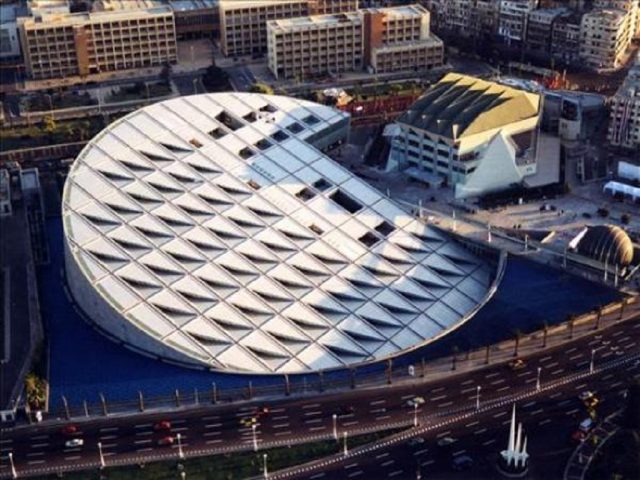The most important tourist places in Alexandria, Egypt
The most important tourist places in Alexandria, Egypt
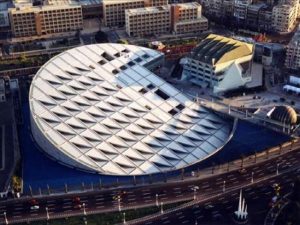
The castle is located in the west of Alexandria in the Bahri region. It was built by Sultan Al-Ashraf Abu Al-Nasr Qaytbay to counter the attacks launched by the Ottoman Empire on Egypt. The castle was built on top of the lighthouse of Alexandria, which was demolished after a strong earthquake struck the city. The castle remained an
impregnable fortress to confront any attacks coming from the Mediterranean, as it was 4 meters high and 2 meters wide. It took two years to build it. It was vandalized by the British occupation at the time of the occupation of Egypt. The Arab Antiquities
Preservation Committee inspected and restored the castle in 1904 AD. The castle is surrounded on three sides by the sea and the castle is divided into three floors designed in a square and octagonal geometric shape to make it easier for soldiers to take shelter in it and defend the city.
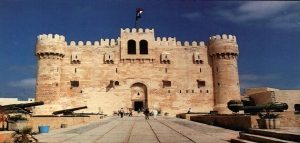
The Library of Alexandria
It is one of the most important tourist places in Alexandria and is located in the Shatby area. The library was built on the ruins of the old library, which was established by Ptolemy II, who was interested in culture and put many books in it. It was mentioned that it contained more than 700 thousand volumes and books. He was not satisfied with putting books, but encouraged the translation of books from others One of the most important books that was translated (Philadelphia) is the Torah. The library contains more than 8 million books and is considered the first digital library. It includes many museums, halls, a conference center and a planetarium.

The sunken cities of Abu Qir
The city of Alexandria is considered one of the cities that have been subjected to drowning more than once due to climatic and natural changes. Some divers have found the ruins of an ancient city called Hercules in the Abi Qir area in Alexandria. The scientific mission of the European Union has revealed that the city has been named by this name in relation to the Greek hero Hercules. The most important ports on the coast of the Mediterranean in the sixth century BC, hundreds of sunken ships and boats were found belonging to the city, and the importance does not depend only on trade, but the city had a religious importance represented in finding the Temple of Heracleion for the worship of the god Amun and some ancient manuscripts, and also found a Statues of the Ptolemaic kings and some gold pieces, utensils and jewels.
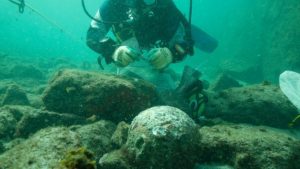
Al-Montazah Gardens
There are gardens of the park in the area that was named after it, and a neighborhood that wraps around the palace built by Khedive Abbas Helmy II to be his rest in the summer. The garden contains many types of trees, such as the well-known palm trees, which are more than a hundred years old. All the gardens inside the park overlook seas such as Aida Beach, Semiramis, Phenicia, Cleopatra, and the private beach of the Palestine Hotel. Inside the park, there is the Salamlek Palace, the Haramlek Palace, a bridge between the tea island and the palaces, a cinema building, a train station, and offices for the park management. The park and the Palestine Hotel appeared in many films, and a walking marathon was revived more than once.
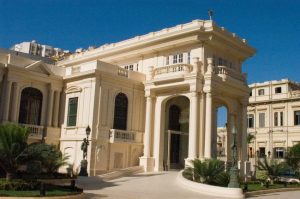
The Greco-Roman Museum
The museum is located in the Raml station, which was inaugurated by Khedive Abbas Helmy II in 1895 AD. The museum includes a large variety of Pharaonic, Greek and Roman antiquities from the third century BC until the third century AD. It consists of 11 halls at the beginning of its establishment. Its halls are divided into 26 halls containing a lot of antiquities such as a head made of marble for Julius Caesar, a head made of marble for Alexander the Great, a mummy in colors of a deceased from the Roman era, a group of pottery vessels, a group of golden ornaments, Ptolemaic and Roman mummies, a huge head of Ptolemy VI, and a statue To the god of the Nile, and statues of the emperors of Rome.
